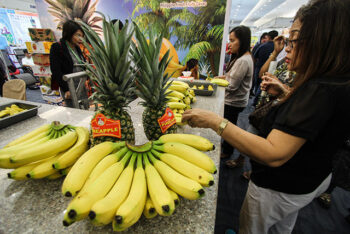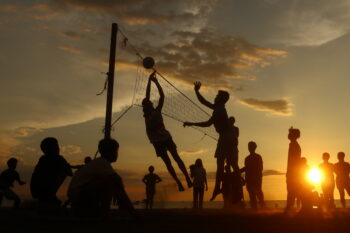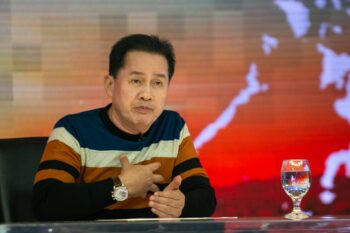
ZAMBOANGA CITY (MindaNews / 17 April) – I am happy to have attended the Zoom forum on creative industry sponsored by the offices of Members of Parliament (MPs) Ras Mitmug and Datu Amir Mawallil. Expanding on the topic of cultural industry, the forum complemented the discussion started by the 1Sama Coalition during its International Bangsa Sama Summit 2023 last month in Zamboanga City. While the Sama mobilization leading to the summit was triggered by “Black September 2022” (i.e., the absence of Sama representation in the BTA), the progressive minds within the coalition wanted that the Sama perspective should be geared towards exploring opportunities for engagement. The blue and creative economies offer a natural fit for maritime Sama communities, providing two options for engagement: institutionalization and support of the creative economy within the BARMM, or engagement with the Philippine Creative Industry Act for Sama communities outside of the BARMM. With two MPs leading at the BTA level, the first issue to be settled is whether to pursue the larger “creative economy” or the more focused “cultural industry.”
Lessons from national legislation and out-of-BARMM model. Republic Act 11904 or the Philippine Creative Industry Act lapsed into law last year. Baguio City as a part of the UNESCO Creative Cities Network (UCCN) was way before the law was passed. An initial cursory review of the law gives us several things to reflect as stated by Atty. Michael Henry Yusingco in his presentation – such as the politics of participation and the dynamics of group politics in the Philippine Creative Industry Development Council (PCIDC) and the issue of intellectual property vis-à-vis shared heritage of the indigenous communities. Two additional issues that he discussed of import to the BARMM are the allowance provided by state for artistic expression and freedom, and that creative and cultural industries can be expressions of regionality and autonomy.
Cultural mapping – actors, processes, orientation, protection and priorities. We have voiced out during the Zoom forum the need for a comprehensive cultural mapping in order to identify who are the cultural industry actors, the processes to be adopted attuned to the context of minorities, the determination of cultural activities whether for commercial and non-commercial purposes, and identification of aspects or specific heritage that should be prioritized for intellectual property laws and copyright protections, and the specific creativity, innovation, and intellectual property values of each and all minority ethnicities in the region.
SWOT analysis. Reflection on minority engagement in the cultural industry in the BARMM involves considerations across nine creative domains. Specifically, the reflection for ethnic minorities should include answers to the following questions:
- Internal strengths: What are the strengths that ethnic minorities bring to these creative domains? Who are the key contributors and what activities are they involved in? How is minority participation manifested in these domains?
- Internal weaknesses: What are the areas of weakness or challenges that ethnic minorities face in preserving their heritage in each of these domains?
- External opportunities: What opportunities exist for ethnic minorities to promote and showcase their tangible and intangible heritage, both traditional and contemporary, in these domains?
- External threats: What external factors or threats pose challenges to the continuity and promotion of ethnic minorities’ tangible and intangible heritage in these domains?
By exploring these questions, we can gain a deeper understanding of how ethnic minorities can effectively engage in the cultural industry in the BARMM and preserve their heritage for future generations.
Towards empowerment, localization and diversity. The cultural mapping exercise will inform the individual minority and collective of minorities about their internal strengths and weaknesses, and their external opportunities and threats. Each ethnicity will have to undertake its own social mobilization, community preparation and advocacy. This task cannot be left to government alone because of the tendency of government for centralization and control. Participation of ethnic groups is crucial to ensure the government framing is towards empowerment, localization, inclusion, diversity and sustainability according to the needs of ethnic communities and not as needs defined by a centralized government.
Implications to Sama ethnicity. In the case of the Sama ethnic group, the SWOT analysis in the cultural mapping exercise and vis-à-vis the nine domains of the cultural industry will allow them to reflect on the following:
- Internal strengths: Are there other subsets of cultural industry not included in the components unique to the Sama communities? What are the manifestations of Sama’s tangible and intangible heritage across these components of the cultural industry? Who are the Sama individuals or groups currently involved in every component and what is the nature of their engagement? What is needed to support current and future initiatives across these components?
- Internal weaknesses: What are the Sama’s current weaknesses in each and across these components? What have the Sama lost, about to lose or in danger of losing if no action is undertaken in the present time?
- External opportunities: What external opportunities can be taking advantage of to support the protection and promotion of the Sama’s tangible and intangible heritage, both in traditional and contemporary expression/forms, across these components? Who should we be working with and what is the nature of the working relationship?
- External threats: What are the current external threats to protection and promotion of the Sama’s intangible and tangible heritage, in both traditional and contemporary forms? What is the nature of these threats across the components and how can we mitigate these threats?
Benefits to Sama communities. It is said that the benefits of cultural industry include economic growth, employment and social development; preserving and promoting cultural heritage and diversity; and, intellectual property protection. The Sama reflection should then be, how these benefits possibly manifest itself across Sama communities. The same can be undertaken by other ethnic minorities in the region:
- Economic gains: What type of jobs and employment will be or can be created? Which activities can generate income for local enterprises and businesses? What type of tourism activities can be developed?
- Cultural promotion: In what ways can the development of cultural industry promote and benefit the Sama heritage? Promote cross-cultural understanding and social cohesion?
- Creativity and innovation: As a platform (cultural industry), what traditional and contemporary expression can best be supported? Which domain artists and creators among Sama communities can benefit from this initiative (cultural industry)? How can Sama artists and creators be supported towards synergy of technology and design.
Challenges to cultural industry. Those who have ventured into the cultural and creative industries share common challenges that must be addressed by the BARMM as it moves towards legislation. These challenges include constraints in funding and financing, limited market access and distribution, technological disruption, operational sustainability, and inconsistent regional policies and regulations that undermine the essence of the cultural industry.
One challenge among political leaders and decision-makers is how they perceive the cultural industry – as an investment or a cost? The latter mindset underscores the need to create champions among them and implement strategic changes in mindset.
Jumpstarting the regional cultural industry. We support the efforts of MPs Atty Ras Mitmug and Datu Amir Mawallil towards institutionalizing a regional creative economy or cultural industry in the BARMM. Aside from our own Republic Act 11904, we / they can also consult the UNESCO Cultural and Creative Industries Development Strategy. We expect a generous and long-term funding mechanism and incentives package to sustain local artists and creators, cultural enterprises and businesses. The direct and indirect financing for Innovation in Public Investment for Arts and Culture in OECD is a good reference on funding mechanism and incentives package.
To promote and develop cultural enterprises in the BARMM, local champions can enhance support by linking community development, women’s participation, and the cultural industry. Two resources that can guide this effort are “Catalyzing Cultural Entrepreneurship in India through products, services and experiences” and “Women’s empowerment through the promotion of cultural entrepreneurship in Cambodia” These examples offer valuable insights for promoting cultural entrepreneurship in the BARMM that are inclusive and empowering for all.
Investing in cultural infrastructure is a crucial component for the long-term viability of the cultural industry. Some may argue that since the BARMM is just emerging from a protracted conflict, investments should be made elsewhere. However, they can learn from Palestine Investment in cultural infrastructure. As a political entity within the Philippines, BARMM can also look to Scottish Investment in Cultural Infrastructure.
Creating a tool to promote evidence-based decision-making, value for money and efficiency of expenditure is another crucial consideration for BARMM’s cultural infrastructure. To this end, proponents can refer to the 2030+ Western Australian Cultural Infrastructure Investment Guidelines.
Another crucial element of any cultural industry is capacity building and networking, both within and outside the industry. Therefore, the proposed regional cultural industry framework should include creative and innovative mechanisms for skills development and enhancement, such as vocational trainings, apprenticeships, mentorships, cultural exchange and collaboration.
The BARMM region is witnessing the emergence of nature-based and cultural tourism, with each province actively promoting and marketing its own offerings on social media. For instance, Sulu has recently launched its “Sulu Travels” app, while Basilan is an ideal destination for day trippers. Furthermore, the direct flights from Cotabato to Tawi-Tawi have resulted in increased demand for local hotels, function halls and other complementary services. The region boasts a unique blend of ecology, local culture, and heritage, including cultural festivals, heritage sites and other cultural events. To ensure that the benefits of tourism are accessible to all, it is crucial to prioritize community tourism in the legislation. We can draw insights from established programs such as the UNESCO World Heritage and Sustainable Tourism Programme, UN World Tourism Organization’s Ecotourism and Protected Areas, and Violante Quintana’s Paper on the Promotion of Natural and Cultural Heritage (2020).
These proposals are just some ways to enhance the proposition that MPs Mitmug and Mawallil are crafting. We can anticipate further refinement and improvement as they continue with their forum and advocacy series. However, 1Sama Coalition hopes that in creating this proposition, diversity and inclusion, empowerment and localization, and the promotion of minority rights will not be mere rhetoric but will eventually become a reality in the Sama communities.
(MindaViews is the opinion section of MindaNews. Noor Saada is a Tausug of mixed ancestry—born in Jolo, Sulu, grew up in Tawi-Tawi, studied in Zamboanga and worked in Davao, Makati and Cotabato. He is a development worker and peace advocate, former Assistant Regional Secretary of the Department of Education in the Autonomous Region in Muslim Mindanao, currently working as an independent consultant and is a member of an insider-mediation group that aims to promote intra-Moro dialogue.)







